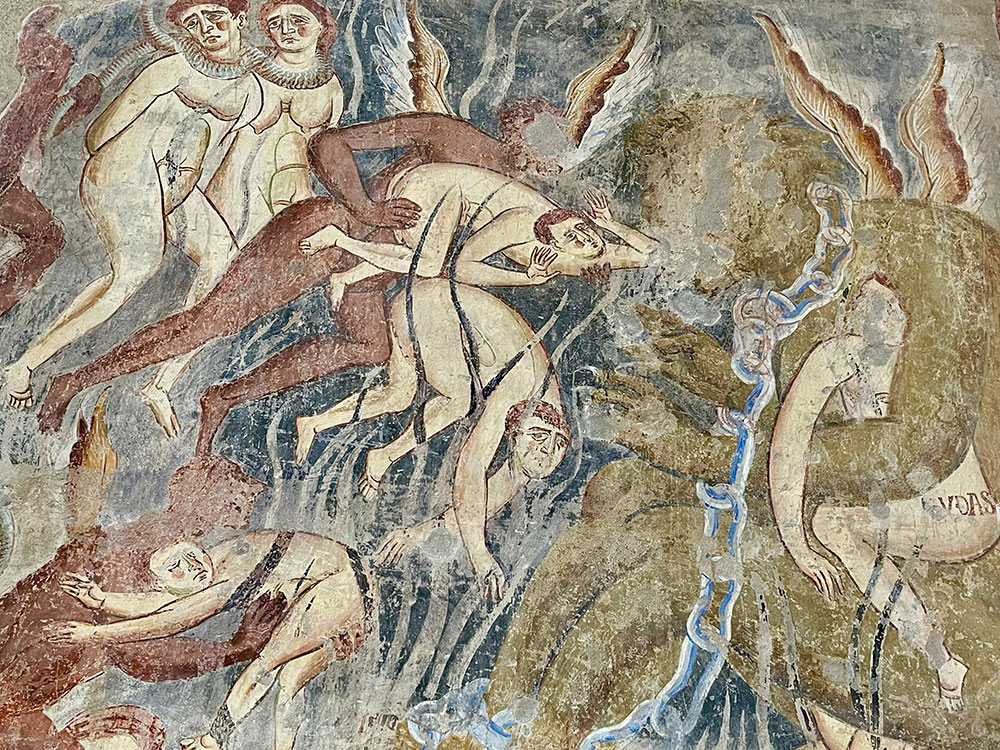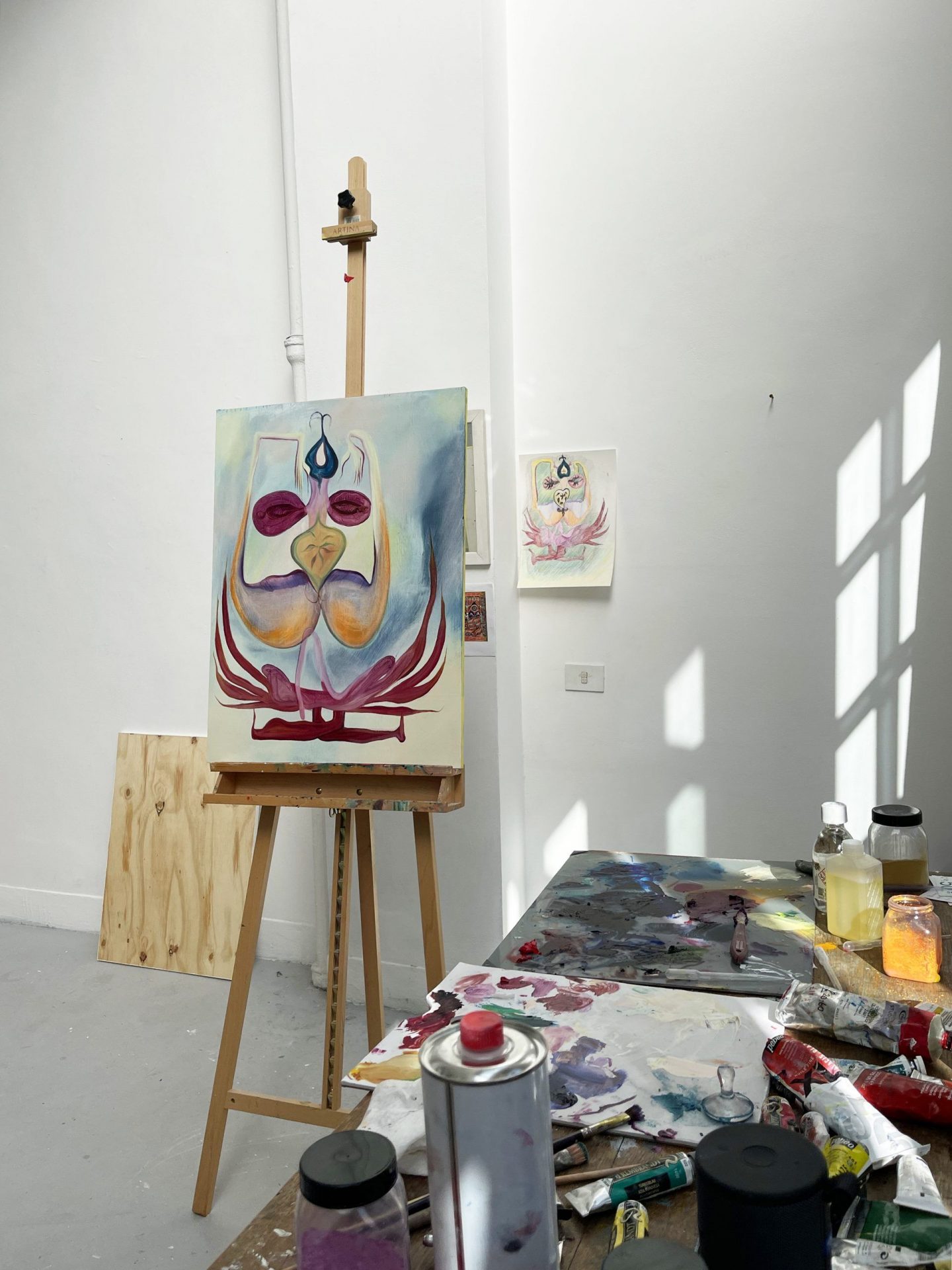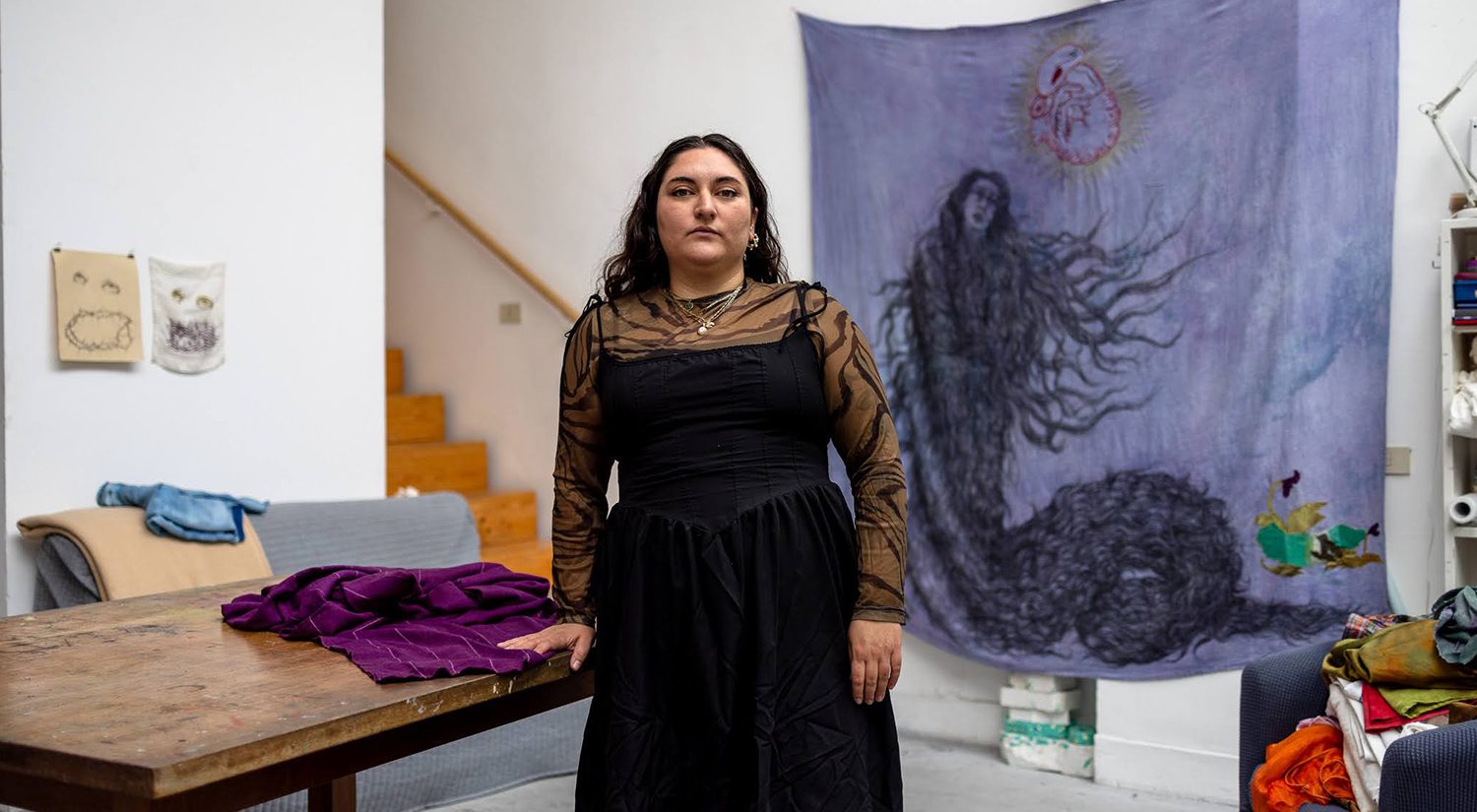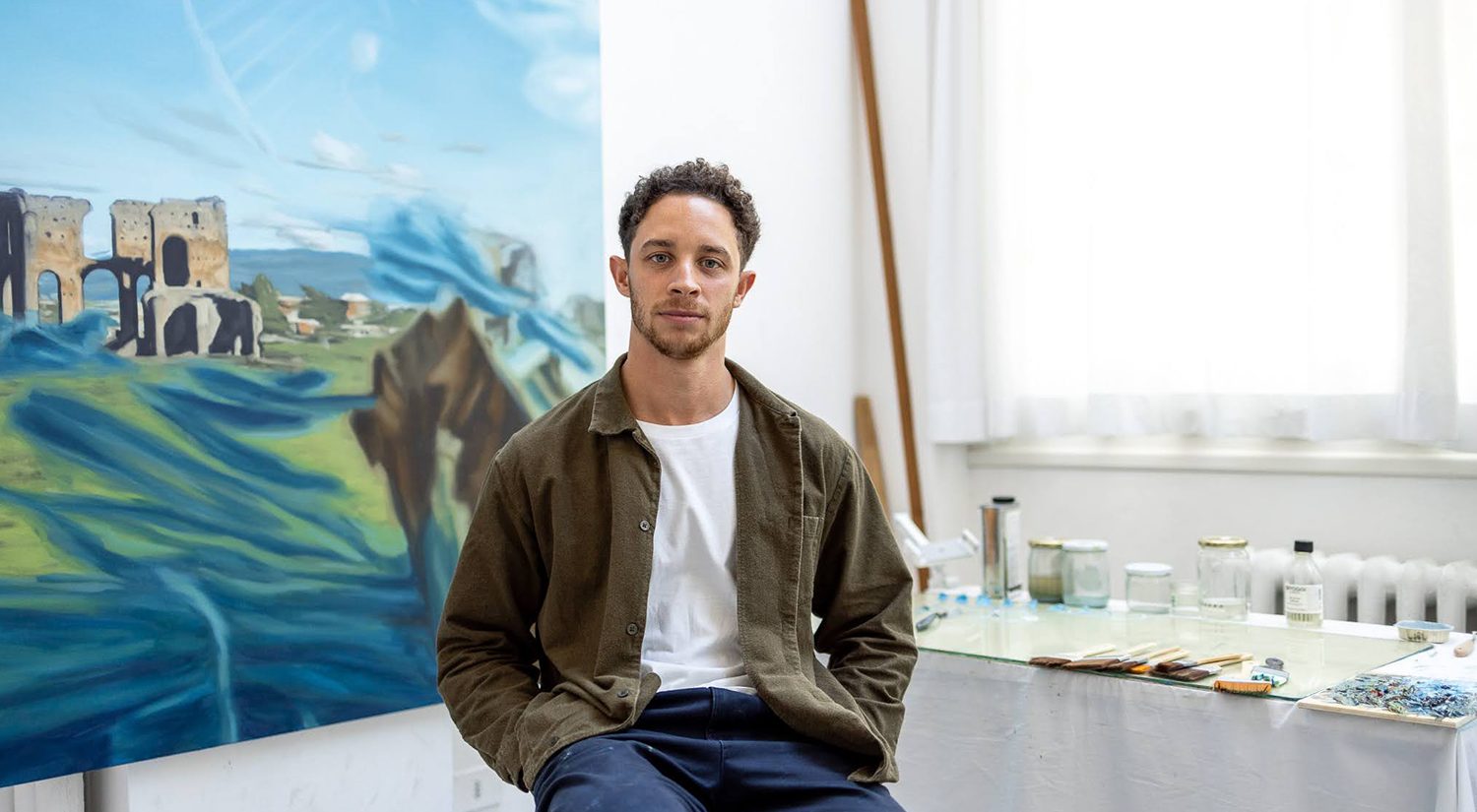An interview with Eleni Odysseos, Abbey Fellow in Painting, in which she speaks about the works she has produced during her residency at the BSR from April–June 2021.
Your research in Rome is inspired by art historian Anthi Andronikou’s article on the visual similarities in twelfth century medieval ecclesiastic painting in Cyprus and Puglia. Could you tell us more about this?
Anthi Andronikou maps similarities in ecclesiastical painting between Puglia, Cyprus, and Jerusalem, and suggests possible reasons for why those similarities exist.
The article suggests that these visual similarities were not circumstantial, but rather traces of collaboration, of a nomadic lifestyle where artists were borrowing from – and working with – one another. Even though their hagiographies would often address dissimilar audiences and different divisions of Christianity, they would do it using identical signs, therefore rendering their signifiers as “arbitrary”.

Detail of wall painting, Abbazia di Sant’Angelo in Formis. Photo courtesy of the artist.
The rendering of those signifiers as “arbitrary” in the linguistic theory of signs, as Andronikou describes it, became a starting point for my interest in symbolic imagery. More specifically, it unfolded into an interest in how abstracted symbolic imagery becomes appropriated by different political systems, cults, and religions across time and space, to signify changing narratives. Symbolic imagery across the Roman period, through to the medieval and renaissance has accumulated in my studio, a process of embodying a language that is then materialised in painting, drawing, sound, and text.

Complesso Basilicale Paleocristiano in Cimitile. Photo courtesy of the artist.
Through this process, I am developing my own lexicon. It is a lexicon that addresses and embraces the fluidity of a present-day, surrealist femininity. Another section of Andronikou’s article I am drawn to, is the story of a group of nuns, organised by queen Alice of Champagne, who were relocated from Acre to Puglia, and who may have commissioned artists in that period – a possible reason that would explain why those visual similarities exist. Their tale triggered my curiosity, and I wanted to find out more about organised cults as well as the societal position of women in the medieval period. Rome offers many such stories, particularly from the Roman period, from Mithraism to the House of the Vestal Virgins. Dr. Maria Harvey, current fellow at the British School at Rome, prompted me to read Mary Wellesley’s This Place is Pryson published on the London Review of Books website in 2019. The text describes the medieval ritual of an anchoress entering her cell as being very similar to a funeral procession. These medieval women would abandon their lives to reside in tiny cells until their death. Wellesley’s description of this ritual opened new conversations within my practice: for example, how sacrifice is embedded in the female experience, how social structures and class feed these narratives, or how spirituality and wisdom are perceived differently when performed by different genders.

Your work seems to explore a transitional moment where anthropomorphic – mostly female – bodies are turning into entities with unclear and undefined outlines. Can you explain more?
Absolutely. My work explores desire, abjection, and isolation through symbolic figuration, choreographing a constellation of painting, text, sound, and light. I am interested in the fluid representation of hybrid creatures and the allegorical depiction of violence in medieval iconography. Animal-human identities are blurred, and creatures emerge from the fogginess of the mark-making process, from the flow of light and the luminosity of the paint. My time here in Rome has offered a wealth of symbolic references and styles of ornamentation. My studio walls and floor are filled with cut-outs, prints, drawings. The paintings are in a transitional moment, where their symbolic lexicon materialises in light, in figuration, or in the transparency of layered colours. The work is interested in entanglements. Moments of isolation, exchange, death and rebirth. Sacrifice, and companionship.

Interview by Marta Pellerini (BSR Fine Arts Adviser).











